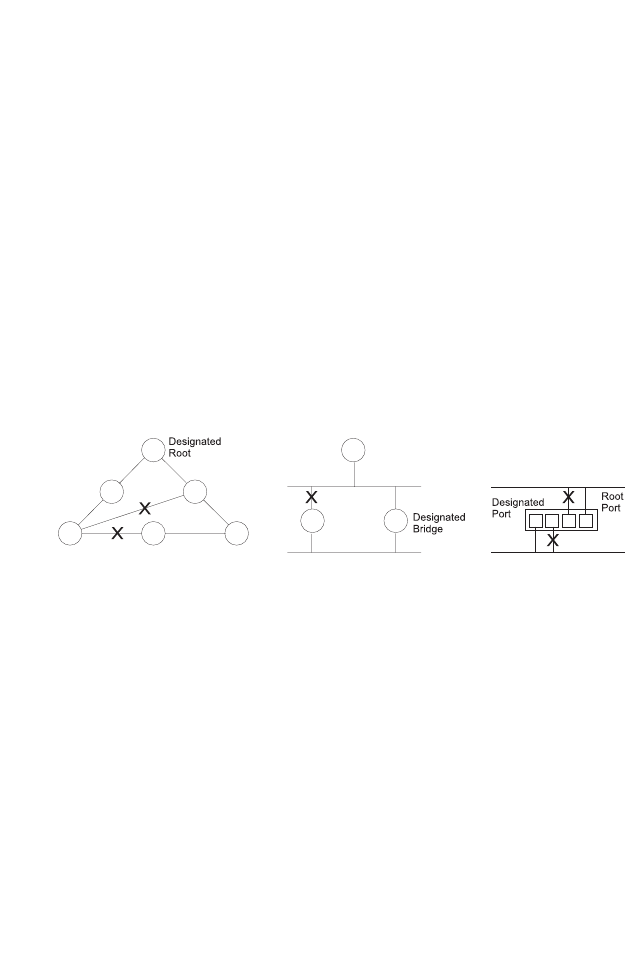
S
PANNING
T
REE
A
LGORITHM
C
ONFIGURATION
3-117
STA uses a distributed algorithm to select a bridging device
(STA-compliant switch, bridge or router) that serves as the root of the
spanning tree network. It selects a root port on each bridging device
(except for the root device) which incurs the lowest path cost when
forwarding a packet from that device to the root device. It selects a
designated bridging device from each LAN which incurs the lowest path
cost when forwarding a packet from that LAN to the root device.
It then selects a port on the designated bridging device to communicate
with each attached LAN or host device as a designated port. After
determining the lowest cost spanning tree, it enables all root ports and
designated ports, and disables all other ports. Network packets are
therefore only forwarded between root ports and designated ports,
eliminating any possible network loops.
Once a stable network topology has been established, all bridges listen for
Hello BPDUs (Bridge Protocol Data Units) transmitted from the Root
Bridge. If a bridge does not get a Hello BPDU after a predefined interval
(Maximum Age), the bridge assumes that the link to the Root Bridge is
down. This bridge will then initiate negotiations with other bridges to
reconfigure the network to reestablish a valid network topology.
RSTP is designed as a general replacement for the slower, legacy STP.
RSTP is also incorporated into MSTP. RSTP achieves must faster
reconfiguration (i.e., around one tenth of the time required by STP) by
reducing the number of state changes before active ports start learning,
predefining an alternate route that can be used when a node or port fails,
and retaining the forwarding database for ports insensitive to changes in
the tree structure when reconfiguration occurs.


















